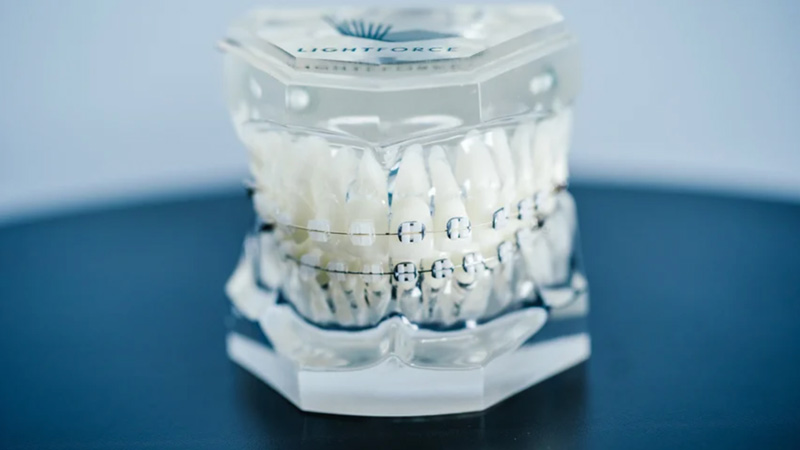Comprehensive Overview to Orthodontics Procedures for Remedying Oral Imbalances
Comprehending the complexities of each procedure, including their mechanisms, advantages, and possible disadvantages, is vital in making educated choices regarding one's orthodontic treatment. As we browse with the detailed guide to orthodontic procedures for correcting oral imbalances, the elaborate details of each approach will certainly unfold, shedding light on the course toward a harmonious and useful dental placement.
Orthodontic Procedures Introduction

Normal adjustments and monitoring are important parts of orthodontic therapy to guarantee progression is on track and to make any kind of essential modifications along the way. By undergoing orthodontic procedures, people can not just attain a straighter grin yet additionally boost their total dental wellness and feature.
Typical Dental Braces: Just How They Function
When considering orthodontic treatments for oral misalignments, typical braces stand out as a reliable method for fixing teeth placing. Traditional braces consist of braces, cables, and bands that function together to apply continual stress on the teeth, slowly relocating them right into the wanted alignment.
As pressure is applied to the teeth through the braces, the bone surrounding the teeth is reshaped to support the brand-new tooth settings. Individuals will certainly require routine modifications at the orthodontist's workplace to make certain the dental braces proceed to use the right stress for efficient teeth motion.
Invisible Aligners: Disadvantages and pros
Unnoticeable aligners provide a discreet and convenient choice to standard dental braces for fixing dental misalignments. These clear, custom-made trays are virtually invisible when worn, making them an appealing option for individuals seeking a more visually pleasing orthodontic treatment. One of the key benefits of unnoticeable aligners is their removability, allowing for easier upkeep of oral hygiene contrasted to conventional braces. People can eliminate the aligners before eating or cleaning their teeth, minimizing the risk of food obtaining stuck in the appliance and streamlining the cleaning procedure.

Surgical Orthodontic Options
Surgical interventions in orthodontics existing sensible alternatives for addressing intricate oral imbalances that might not be successfully solved via standard orthodontic therapies. While unseen aligners and typical dental braces can remedy numerous orthodontic issues, certain instances call for surgical intervention to achieve optimum outcomes. Surgical orthodontic choices are normally suggested for severe malocclusions, substantial jaw disparities, and situations where the underlying bone structure requires alteration to accomplish proper alignment.
One usual surgical orthodontic procedure is orthognathic surgical procedure, which includes repositioning the jaws to deal with useful concerns such as problem talking or chewing. This surgical procedure is usually done look here in partnership with an orthodontist who assists align the teeth before and after the procedure. Surgical orthodontics might additionally include treatments to subject impacted teeth, eliminate excess gum cells, or improve the jawbone to create a much more harmonious facial account.
Before considering surgical orthodontic options, patients go through a comprehensive examination to determine the need and potential benefits of such treatments. orthodontics. While surgical procedure may appear daunting, it can substantially enhance both the function and aesthetic appeals of the smile in instances where conventional orthodontic therapies drop short
Retainers and Post-Treatment Care

Post-treatment care includes following the orthodontist's instructions faithfully. This might include appropriate oral health techniques, attending follow-up visits, and wearing the retainers as recommended. Failing to abide with post-treatment treatment guidelines can cause regression, where the teeth progressively move back towards their original settings. Constant retainer wear, great oral hygiene, and routine dental examinations are crucial for keeping see it here the outcomes attained with orthodontic surgical procedure and making certain the lasting security of the remedied oral placement.
Verdict
In conclusion, orthodontic treatments offer different alternatives for fixing oral misalignments. Surgical orthodontic alternatives are available for extra severe imbalances. Overall, orthodontic treatments can effectively enhance oral health and visual look.
As we browse via the thorough guide to orthodontic treatments for correcting dental imbalances, the intricate details of each approach will certainly unfold, dropping light on the course towards a harmonious and practical dental positioning. - cumming orthodontist
One of the most common orthodontic treatments is the use of dental braces, which are composed of steel braces and wires that apply gentle pressure to slowly move teeth right into the wanted position.When considering orthodontic treatments for dental imbalances, standard braces stand out as a time-tested approach for correcting teeth positioning. Furthermore, undetectable aligners might not be ideal for intricate orthodontic concerns that call for more significant teeth activity, as they are generally suggested for mild to moderate cases. Retainers are customized orthodontic gadgets created to hold teeth in their remedied settings after the completion of orthodontic treatment.